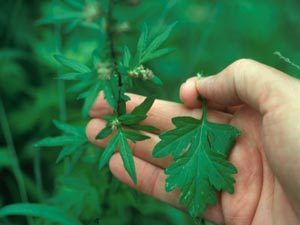 Ever heard of moxibustion? It’s a traditional Chinese treatment that involves burning a plant called mugwort, and is said to help relieve “cold and damp” ailments such as colds, congestion, and digestive issues. The mugwort is sometimes made into a small roll like a cigar: it’s then lit and burned close to the body. Small pieces of mugwort can also be placed on the body at specific acupuncture points, and lit there.
Ever heard of moxibustion? It’s a traditional Chinese treatment that involves burning a plant called mugwort, and is said to help relieve “cold and damp” ailments such as colds, congestion, and digestive issues. The mugwort is sometimes made into a small roll like a cigar: it’s then lit and burned close to the body. Small pieces of mugwort can also be placed on the body at specific acupuncture points, and lit there.
In traditional Chinese medicine, pain is thought to be a problem with movement of the qi, or life energy. Good blood circulation helps qi to flow. Moxibustion’s warming action encourages blood and qi movement, and so is may to help relieve pain.
Treatment with a rolled-up tube of mugwort is called indirect moxibustion. The practitioner holds the tube close to an area on the body until the skin turns red. Burning the mugwort on the skin can take two forms: if it’s removed before it burns the skin, it’s still indirect moxibustion. If it’s allowed to burn out on the skin, it is known as direct or scarring moxibustion. The belief is that if you burn an acupuncture point, the healing process will keep on stimulating that point. Mugwort can also be placed on the end of an acupuncture needle and lit while the needle is in the skin, which is thought to warm the acupuncture point and get the blood and qi flowing.
Moxibustion has long been used that it may help turn breeched babies so they are head down and ready for delivery – and this use has crossed over into traditional Western medicine. A 1998 medical study showed that moxibustion may help turn breech babies.
Mugwort is the best choice of herb for moxibustion because it stimulates blood flow, especially to the pelvis. It can help with menstrual problems and cramps. It also shouldn’t be used if the patient has respiratory problems, since burning the mugwort produces a lot of smoke.







